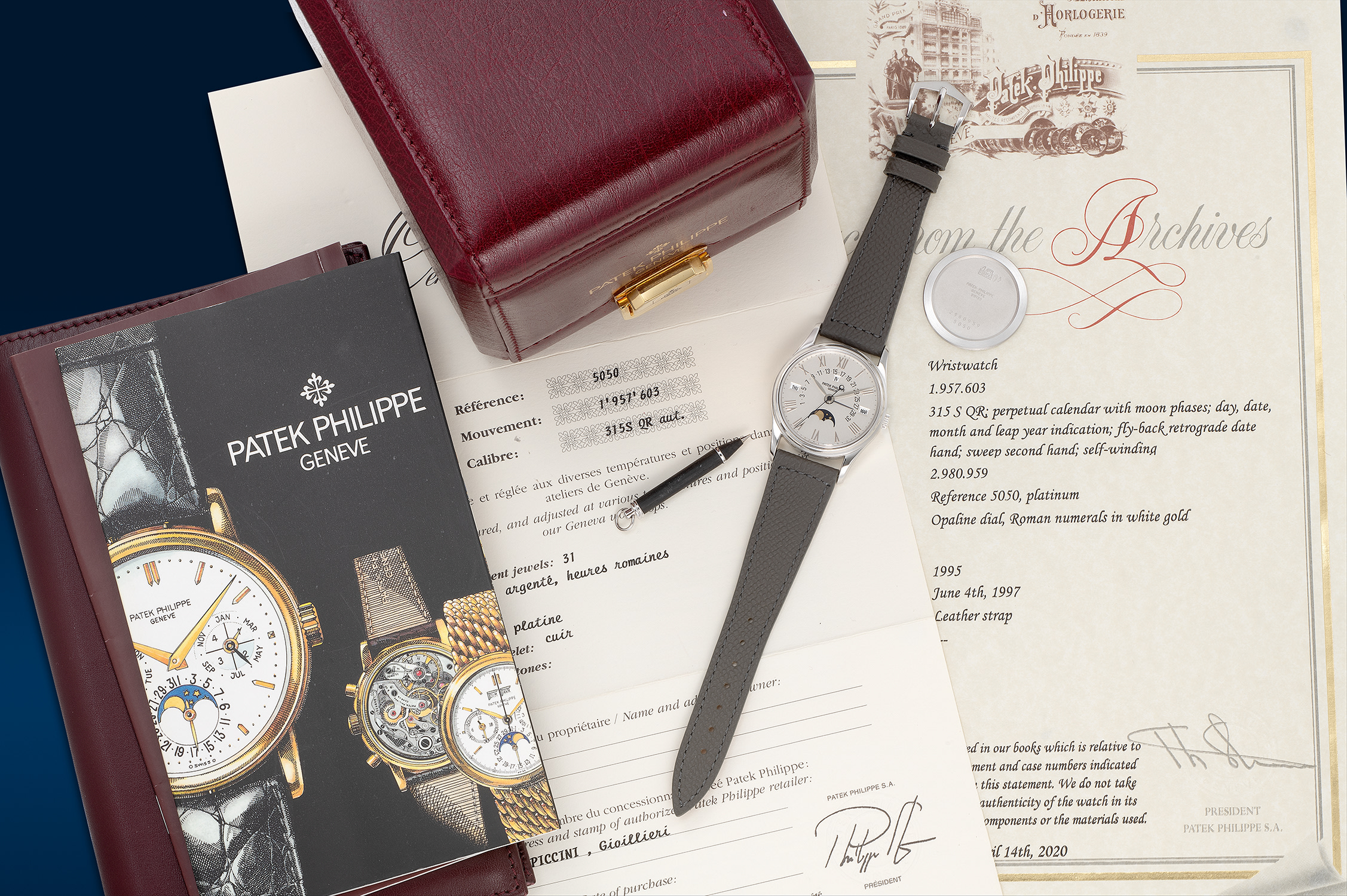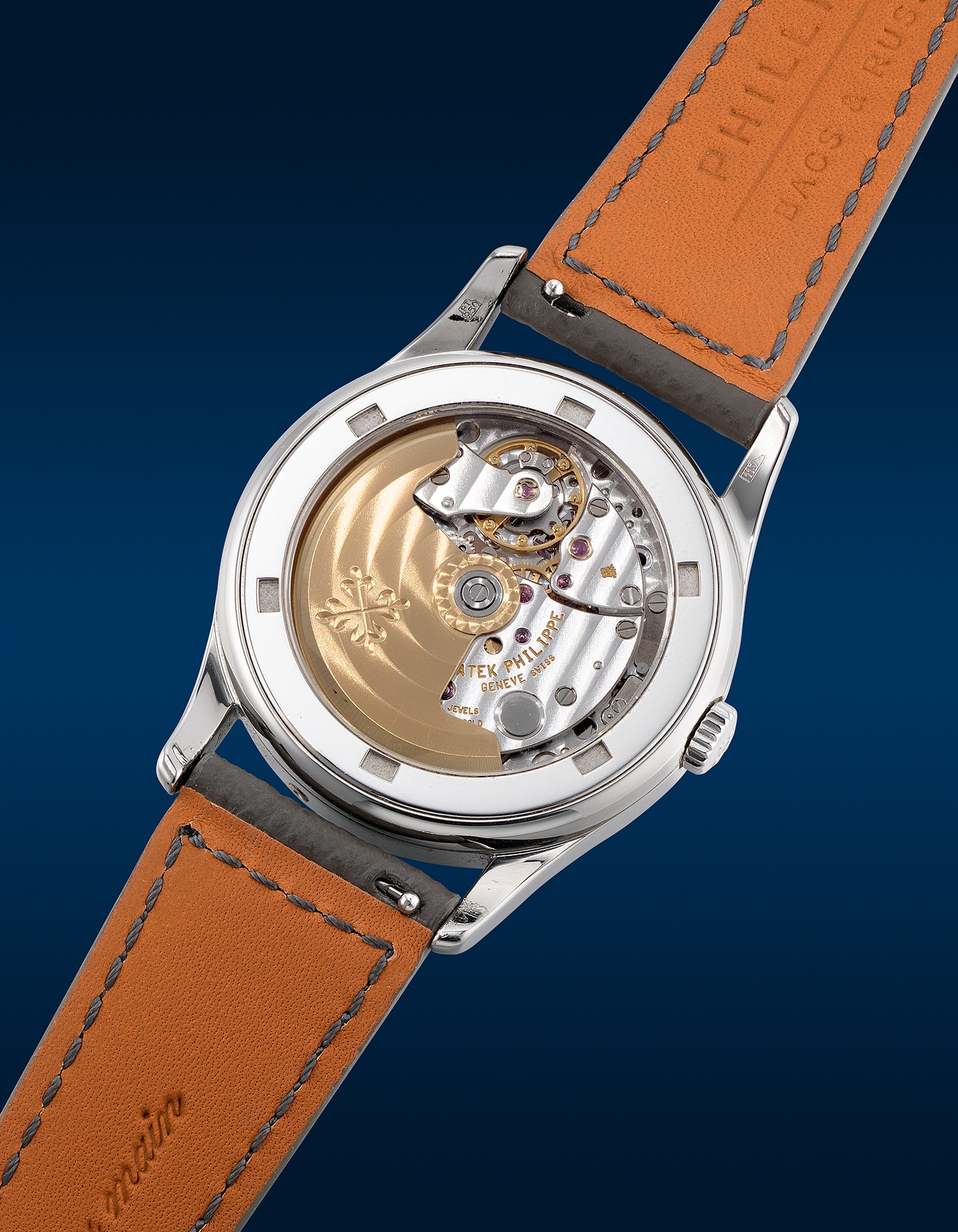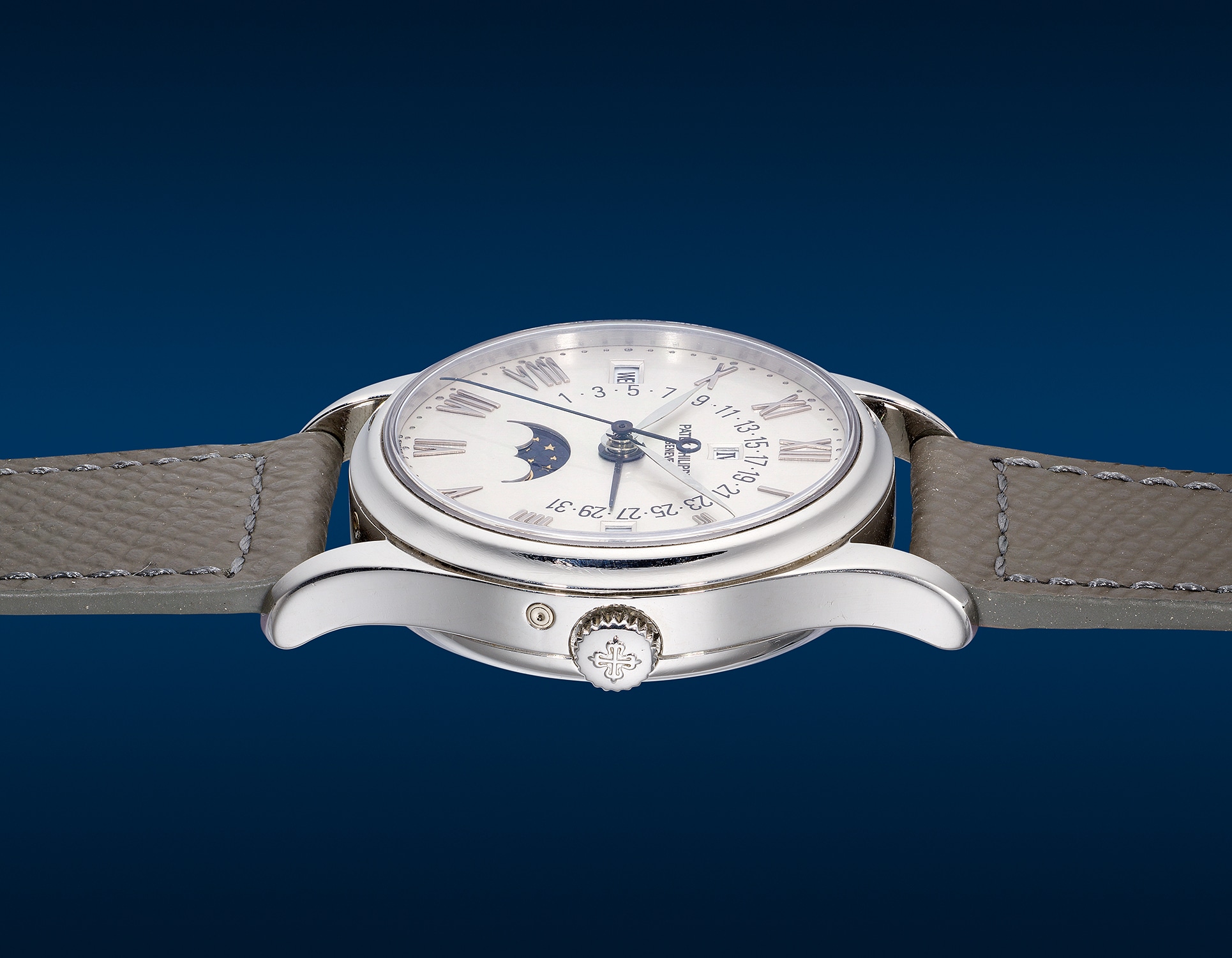









921
Patek Philippe
Ref. 5050P
A fine, attractive and historically important platinum perpetual calendar wristwatch with center seconds, moon phases, retrograde date, leap year indication, applied Roman numerals, Certificate of Origin and presentation box
Full-Cataloguing
Like grandfather, like grandson, Fullerton was a passionate watch enthusiast who maintained Grave’s pieces while also assembling his own impressive collection of distinguished timepieces in exceptional condition. In addition to his thorough record-keeping and personal daily maintenance, Mr Fullerton presciently insisted that cases and dials not be touched during cleaning and servicing, and that almost all of his watches retain their original accompaniments. The result is a time capsule collection, with each example seemingly untouched since its construction. The present platinum ref. 5050 became one of his many prized possessions in 2003.
The ref. 5050 is a highly collectible model, introduced at Baselworld in 1993 as Patek Philippe’s first serially produced perpetual calendar wristwatch with moon phases and retrograde date. The reference was released in yellow, pink and white gold, as well as platinum like the present timepiece. Each engraved with the case maker key number 115, all ref. 5050 cases were manufactured by Favre-Perret. According to research, only an estimated 150 examples were dressed in platinum, spread across three series throughout its nine-year production run. An evolution of the ref. 5050 can be noticed with the first series featuring thin painted roman numerals, while the second series released in 1995 is defined by the applied baton indexes with an “Automatic” designation below the moon phase. The third series, as per this platinum example, has applied Roman numerals and excludes the “Automatic” signature. So far, only 14 examples of the ref. 5050P-018 have been identified, boasting this exact dial configuration.
Combining its rarity, prominent provenance and remarkable condition, PHILLIPS is proud to offer this impressive ref. 5050 to the public for the third time. The present example first came to light in 2012 during the late Reginald H Fullerton, Jr’s auction and was later sold at PHILLIPS in 2020. Patek Philippe’s perpetual calendars are second to none, and this is an irresistible opportunity to own a piece of their historical past, paired with an important horological lineage.
Patek Philippe
Swiss | 1839Since its founding in 1839, this famous Geneva-based firm has been surprising its clientele with superbly crafted timepieces fitted with watchmaking's most prestigious complications. Traditional and conservative designs are found across Patek Philippe's watches made throughout their history — the utmost in understated elegance.
Well-known for the Graves Supercomplication — a highly complicated pocket watch that was the world’s most complicated watch for 50 years — this family-owned brand has earned a reputation of excellence around the world. Patek's complicated vintage watches hold the highest number of world records for results achieved at auction compared with any other brand. For collectors, key models include the reference 1518, the world's first serially produced perpetual calendar chronograph, and its successor, the reference 2499. Other famous models include perpetual calendars such as the ref. 1526, ref. 3448 and 3450, chronographs such as the reference 130, 530 and 1463, as well as reference 1436 and 1563 split seconds chronographs. Patek is also well-known for their classically styled, time-only "Calatrava" dress watches, and the "Nautilus," an iconic luxury sports watch first introduced in 1976 as the reference 3700 that is still in production today.